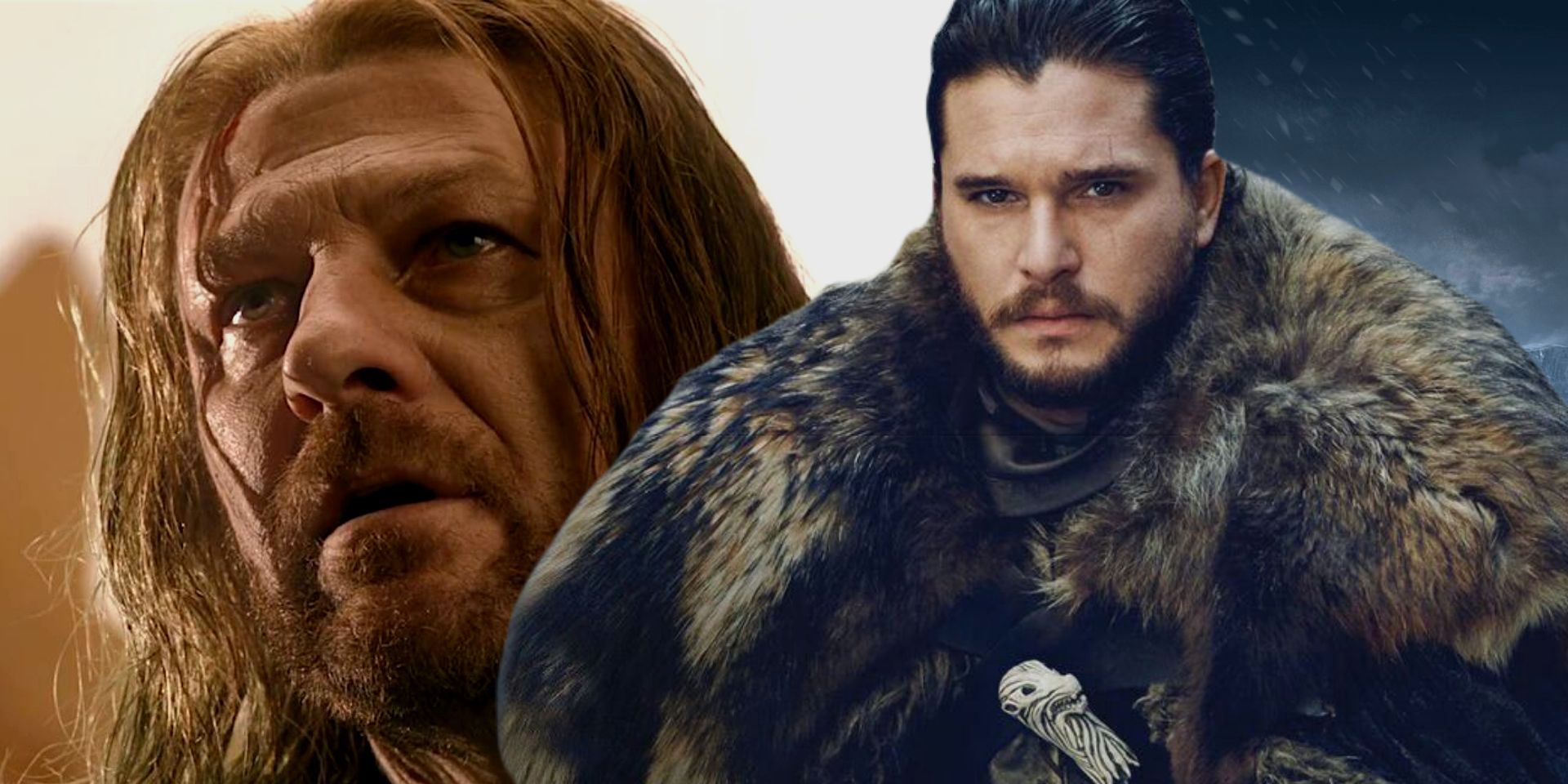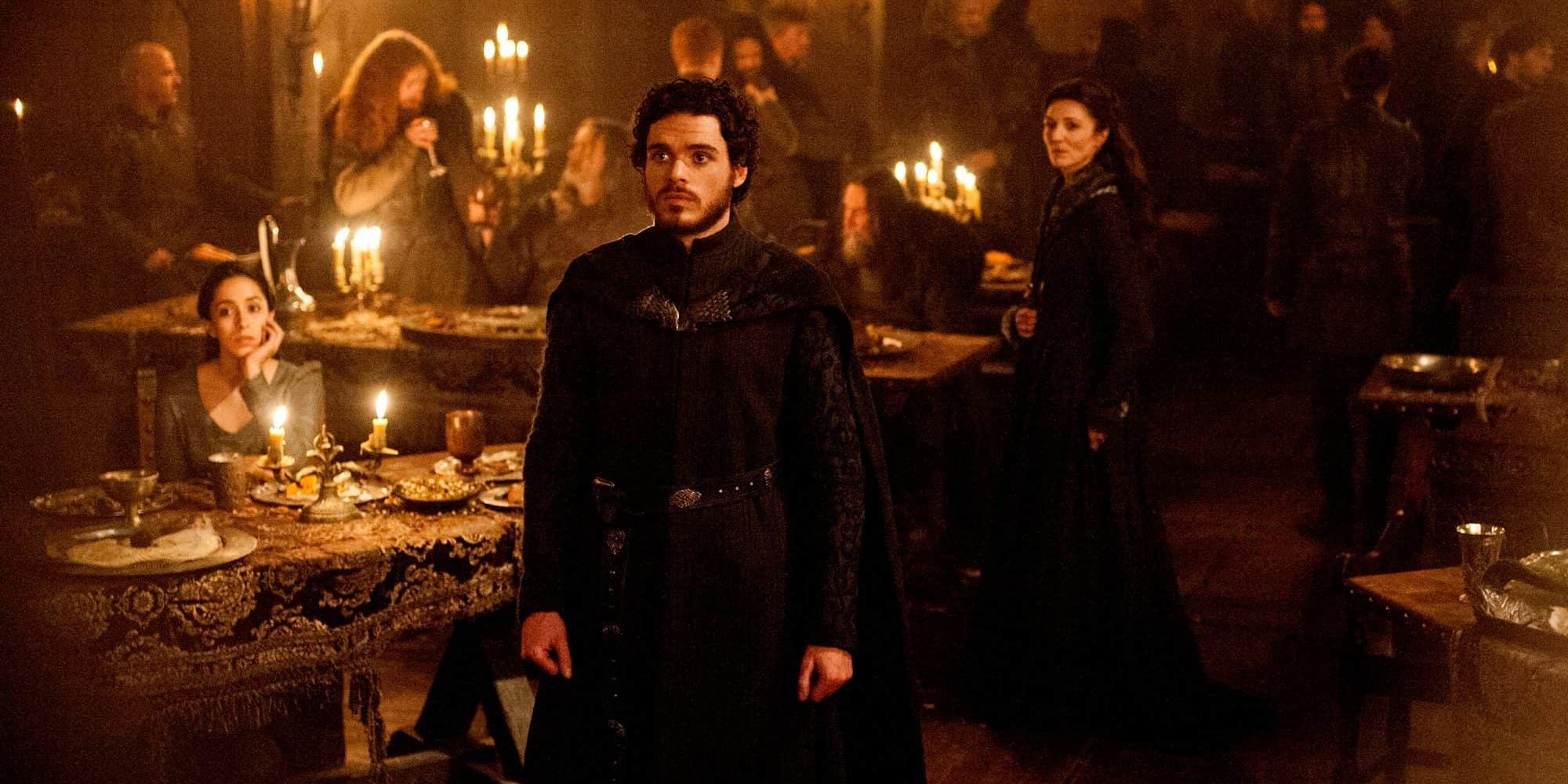A Game of Thrones sequel series starring Kit Harrington as Jon Snow is on the way, and it must remember the original show's golden rule. HBO has announced that the new series will be set after the events of Game of Thrones when Daenerys Targaryen died as the show's final antagonist in season 8 after the Night King's death at Arya Stark's hand. If the new series is to redeem its predecessor and capture the magic of Game of Thrones' earlier seasons, it must not break the rule that seasons 7 and 8 carelessly threw out.
Adapted from George R. R. Martin's A Song of Ice and Fire series, Game of Thrones season 1 made fantasy realistic. Though it had giant direwolves, dragons, and White Walkers, it initially felt more like a historical drama than a fantasy series like The Lord of the Rings. Part of the reason why was that characters die without any warning. Major examples included Ned Stark's execution at the end of season 1 and the infamous Red Wedding in season 3, which saw the deaths of Catelyn Stark, Robb Stark, Talisa Stark, and Robb and Talisa's unborn child on the orders of Lord Walder Frey. It was an unwritten rule that any character could die at any moment, such as the surprise death of Pedro Pascal's Oberyn Martell in season 4.
The new Game of Thrones sequel must make main characters expendable again if it is to succeed. The original series was remarkably tense, as there was a genuine fear that beloved characters like Tyrion Lannister, Sandor "The Hound" Clegane, and Bronn might die in any episode. However, this fear diminished completely in seasons 7 and 8, as characters like Jaime Lannister were able to charge toward Drogon, Daenerys' fire-breathing dragon, and somehow survive. This ultimately made watching Game of Thrones boring, as there was no dramatic tension. The sequel series must address and fix this if Westeros is to be interesting again.
Game of Thrones was such a compelling show initially because of its grittier approach to fantasy. As the show went on and plot points became more contrived with characters able to fight hordes of Wights and White Walkers without dying, it grew into a more traditional, less-realistic fantasy story. Season 7, episode 6, was particularly infamous in this regard. It featured Jon Snow, the Hound, Beric Dondarrion, Ser Jorah Mormont, Thoros of Myr, and Gendry going up against a literal army of Wights and White Walkers. Despite this, all but Thoros (who is a supporting character, not a lead) escape, demonstrating their "main character plot armor." Game of Thrones' sequel must eliminate plot armor in main characters like Jon Snow, or its plot will feel like it has no stakes, as the case with Game of Thrones seasons 7 and 8.
HBO's sequel series to Game of Thrones is in both a good and bad position by having no source material to draw from. Martin has yet to finish A Song of Ice and Fire with The Winds of Winter and A Dream of Spring, so there is no indication of where the story will go after Game of Thrones. As such, the producers have the chance to bring back Martin's original vision of a political, realistic fantasy story where the stakes are high, and even characters like Jon Snow, Bran Stark, and Tyrion Lannister can die. However, they may also continue to create more of the sanitized version of Martin's story from seasons 7 and 8 without the author's gritty source material to adapt. Regardless, if the sequel series is to succeed, it must avoid falling into the same trap as Game of Thrones and bring dramatic tension back to Westeros.


